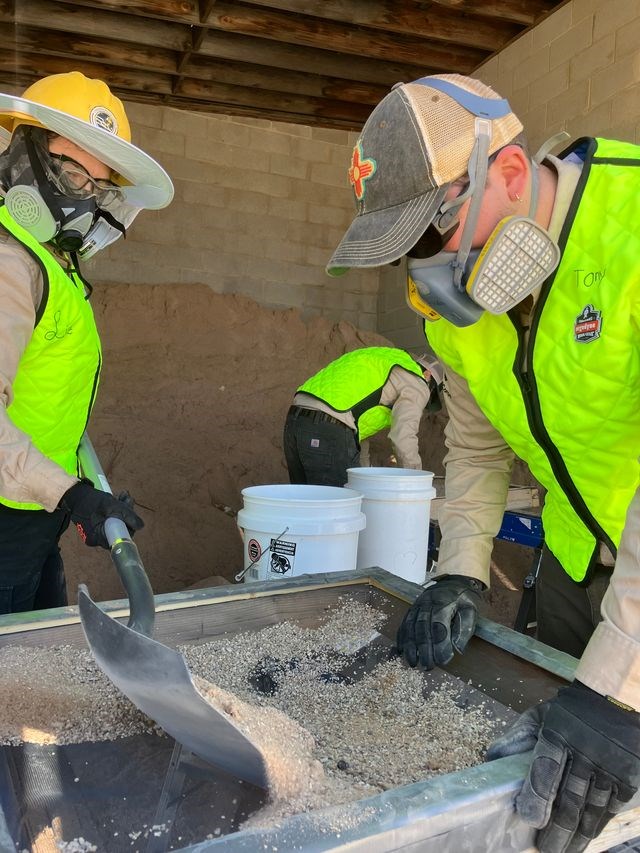Part of a series of articles titled Youth Maintenance Action Team Projects.
Article
Carlsbad Caverns: Preserving History, Building Futures

Conservation Corps New Mexico
Through the GAOA Maintenance Action Team (MAT) program, the park recently repaired and rehabilitated the historic westbound masonry guardrail along the 1934 entrance road as well as sections of the batflight amphitheater. This project wasn't just about fixing stones; it was about building futures. The project team repointed more than 600 linear feet of the historic masonry guardrail with new mortar and replaced loose limestone cap stones.

Conservation Corps New Mexico
The project team learned new skills for life and had the opportunity to further explore their passion for the outdoors and preservation. “When I got here it really motivated me to go out, go beyond my limits and learn something new,” says corpsmember Malcom Begay.
Team members gained a broader and fresh perspective on honoring the natural resources and the importance of taking that context into consideration when working on such a project. They also grew confidence in their ability to learn new skills and better understand what possibilities are available to them and how to pursue them. “This project has broadened what I knew was possible, what jobs I knew existed, what I could do,” says corpsmember Rebeka Diosas.
The project mentor, Bruce Wright, is also very happy with the outcome. “Really they have learned more than masonry. It’s work ethic too. I can see how they started off and how they’re ending. They’ve gained skills and knowledge where they can go out and apply their training and pass it on. Every morning we set goals and they reach them. It’s a win-win situation for all parties.”
The project mentor, Bruce Wright, is also very happy with the outcome. “Really they have learned more than masonry. It’s work ethic too. I can see how they started off and how they’re ending. They’ve gained skills and knowledge where they can go out and apply their training and pass it on. Every morning we set goals and they reach them. It’s a win-win situation for all parties.”

Conservation Corps New Mexico
The MAT program uses these funds to bring NPS staff who are trained in historic restoration and preservation work, along with youth corps, to national parks to perform smaller, but critical, maintenance rehabilitation and repair projects. MATs enable the NPS to complete projects that require consistent high-quality work from skilled craftspeople at a time when fewer people are practicing traditional trades.
Have a question about Youth or Young Adult Programs? Please e-mail us. Learn more about what we do. Be sure to follow us on Facebook, X, and Instagram.
Last updated: July 29, 2025
